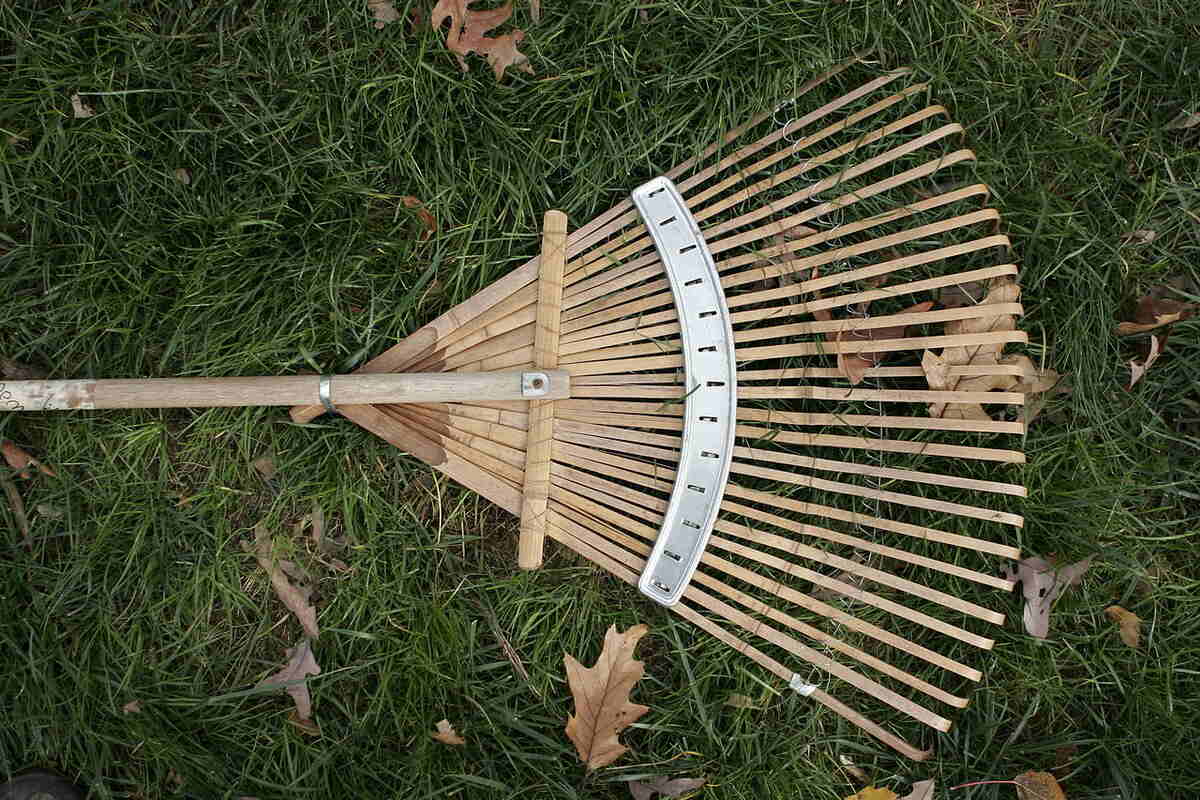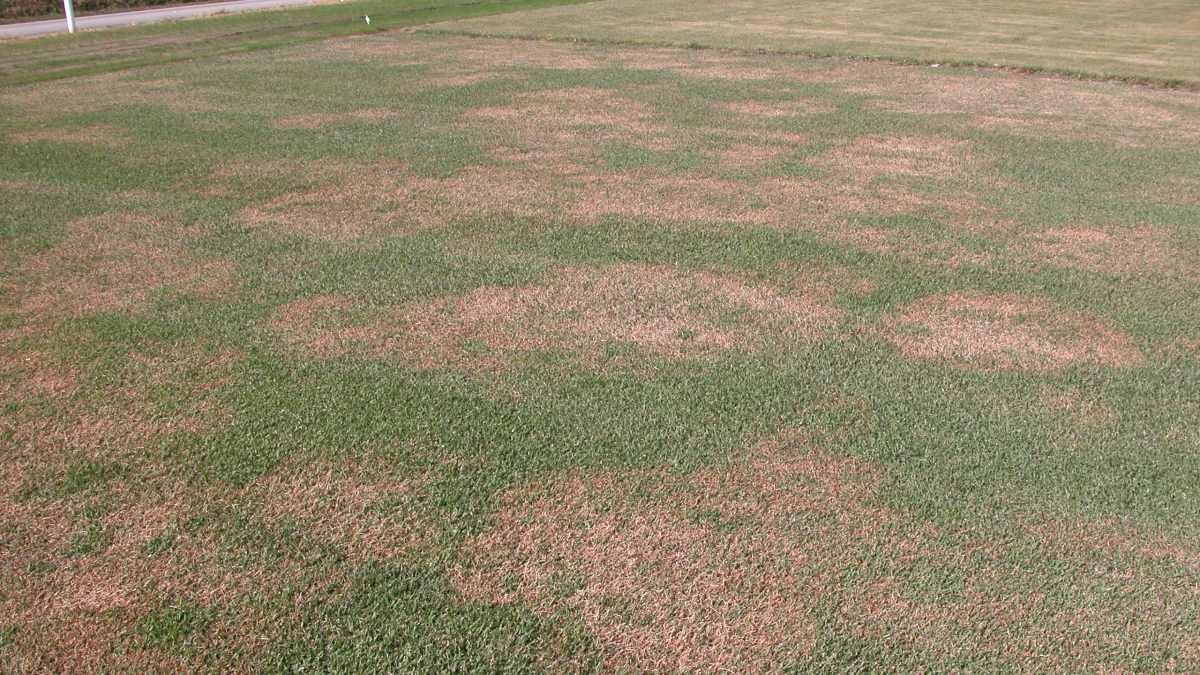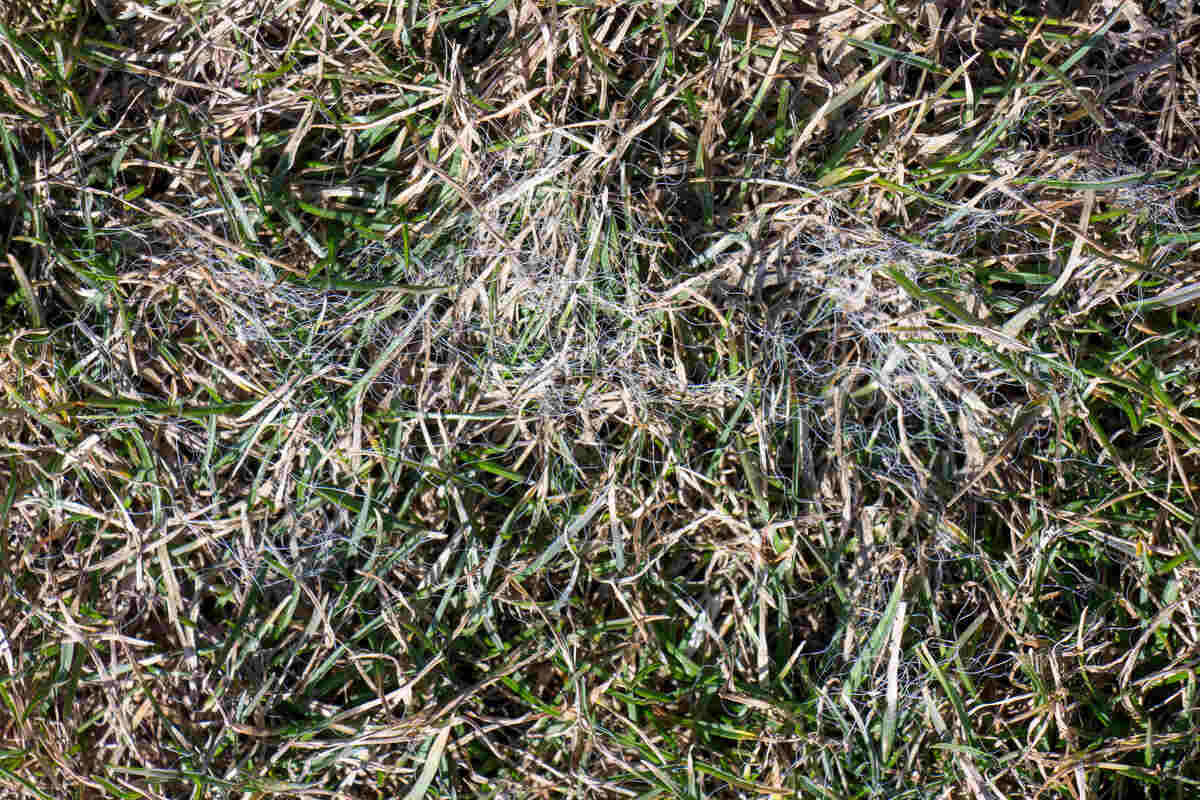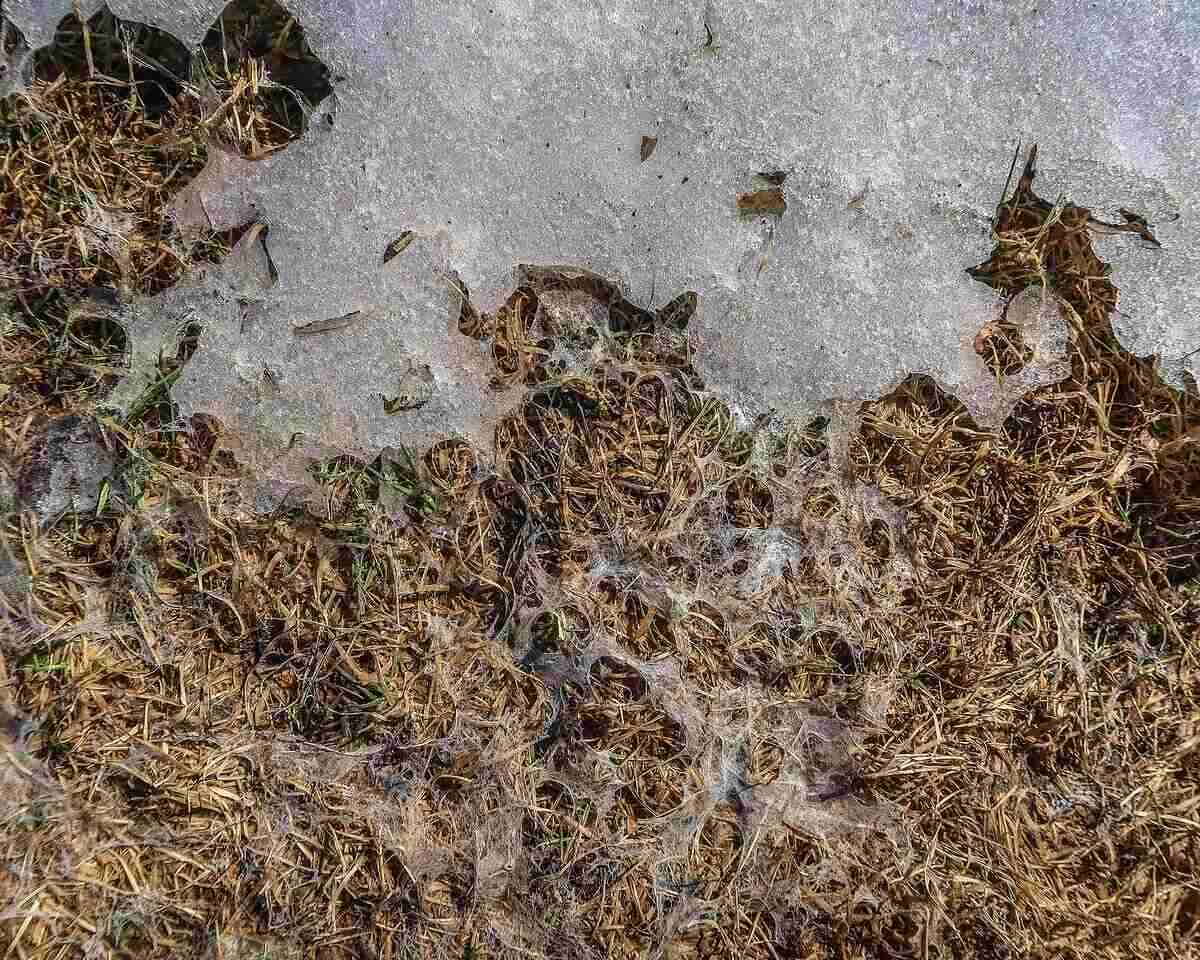
Snow mold makes unsightly, bleached patches on spring lawns, but it’s easy to repair. The best way to get rid of the snow mold fungi in the spring is to rake the matted turfgrass and let the sun and fresh air dry out the mold.
What is Snow Mold?

When the snow melts in early spring, some lawns end up with circular tan patches of matted, brittle grass and fuzzy whitish webs. These are the signs of a snow mold infection.
Snow mold is the name of a group of fungal diseases that mainly attack cool-season grasses during wet, snowy winters. The more persistent the snow, the worse the damage.
These fungi penetrate the grass blades and leaves and rot the tissue. Damage severity depends on weather conditions and the type of snow mold. There are two common types of snow mold:
- Gray snow mold only damages the leaves, so most plants recover by late spring.
- Pink snow mold, on the other hand, attacks crowns and roots and can kill the grass.
“However, the extent of the damage is typically minor to moderate and very rarely leads to turf death,” said professor Paul Koch from the University of Wisconsin-Madison.
Snow mold dies without intervention when the weather warms up, but it can take a week to a month after the thaw. You can remove the snow mold faster and speed up grass recovery in five simple steps.
5 Steps to Get Rid of Snow Mold
1. Identify Snow Mold Damage
Snow mold patches have a particular look that makes them easy to identify, especially soon after snowmelt:
- Patches are roughly circular, with tan, bleached grass that looks matted and brittle.
- The grass has a grayish, silvery hue (gray snow mold) or a pinkish tint, sometimes with a copper-colored ring surrounding the patch (pink snow mold).
- If it’s soon after the thaw and the grass is still wet, you can see the whitish mycelium (fine fungal strands) on the grass leaves.
Gray snow mold patches grow up to 3 feet wide, while pink snow patches usually grow only about 1 foot wide.
When thick snow covers the grass for months, patches can merge, creating large areas of matted grass and whitish mycelium.
Tan and brown patches can also be caused by other types of winter damage, such as crown hydration and winter desiccation. Only the snow mold has a grayish/pinkish tint across the damaged patches.
2. Inspect the Yard
If you spot snow mold damage in one area, look for more. The mold’s spores and mycelium spread quickly through lawn equipment and shoes.
Are there heaps of snow that haven’t melted yet? If so, those areas will probably have snow mold damage when the snow cover finally thaws.
3. Remove Snow Drifts Still Piling on the Lawn
The longer the snow cover stays on the lawn, the more severe the damage. Slowly melting snow keeps the grass soggy and cool and supports fungal growth.
Start by breaking the remaining piles of snow with a shovel or a rake, and spread the snow around the yard to melt faster.
4. Rake the Infected Areas
Raking the snow mold patches breaks the matted grass. Fresh air, heat, and sunlight enter the fungi nest and dry the mold faster. Here’s how to rake snow mold patches for best results:
- Wait until the soil is slightly dry. If you rake wet soil, you risk pulling the grass out with the roots and compacting the soil where you walk.
- Snow mold fungi can trigger allergies, so wear a safety mask when raking their hiding place.
- Gently rake out the damaged patches to avoid harming the grass crown (the point where leaves and roots grow from).
- Collect the dead grass and toss it in a bin. Disinfect the rake by dipping it into a 10% bleach solution to avoid spreading the disease on your lawn.
My tip: If you walk on bare soil on the lawn and you can see your shoe imprint, the soil is still too moist to walk on it or rake it.
While full recovery can last a while, you’ll see the lawn looking better right after raking. You’ll also notice where you’re left with bare spots that need reseeding.
5. Remove Dead Grass and Reseed
You’ve done your best killing the mold on your lawn faster. Now it’s time to repair the damage and return the lawn to its spotless look for the summer.
Reseed bare spots or overseed thinned areas in the spring when the soil temperatures provide the best chance for seed germination (between 50 and 65 degrees Fahrenheit for cool-season grasses).
Here’s how to repair the patches made by snow mold:
- Remove the dead grass and the thatch with a rake.
- Loosen the soil with a pitchfork if the ground is compacted. Use a core aerator if it’s a large area.
- Huge snow piles can lead to low spots on the lawn. To prevent water pooling, add some good-quality topsoil and level the area.
- Plant grass seeds and spread fertilizer to boost growth.
Tall fescue, Kentucky bluegrass, and perennial ryegrass are more susceptible to snow mold damage than fine fescues. Overseed with a mix of fine-leafed fescues to improve snow mold resistance (hard fescue and creeping fescue are especially hardy).
How to Keep Snow Mold from Returning
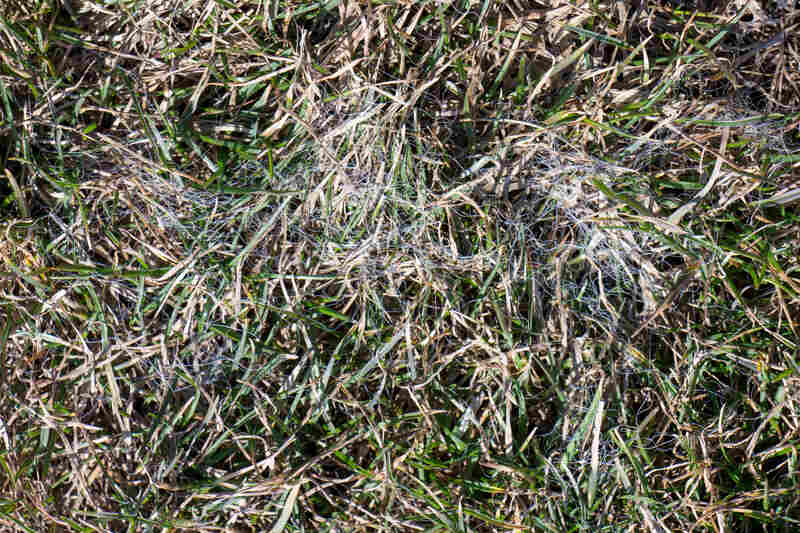
Damp, compacted soil, dead organic matter on the lawn, shade, tall, unmowed grass, and piles of snow on the lawn all contribute to snow mold diseases.
To make your turf less attractive and comfortable for snow mold fungi:
- Remove organic debris (thatch, fallen leaves) before snow falls.
- Prune trees to expose the lawn to more sunlight.
- Don’t overwater the lawn in the fall.
- Aerate the lawn to improve soil drainage.
- Mow cool-season grasses 2 to 3 inches tall until they stop growing in late fall.
- Limit high-nitrogen fertilizers close to dormancy.
- Apply preventive fungicides in late fall, before the first snow.
- Keep snow from piling on the grass.
FAQ on How to Get Rid of Snow Mold
Will aeration help prevent snow mold?
Yes, core aerating the affected areas in the fall will help reduce the thatch layer, allow nutrients and airflow to penetrate the soil, and prevent snow mold from settling in.
Should you treat snow mold with fungicides in the spring?
No. Spring applications are ineffective since the mold dies as the weather warms up. The best way is to use preventive applications in late fall before the snow covers the grass.
Does snow mold spread?
Yes. Left unmanaged and in a lawn rich in dead organic matter, snow mold spreads, damaging larger areas. That’s why it’s important to treat it as soon as you see it in early spring.
When to Call a Lawn Care Pro
Not sure whether you’re dealing with snow mold or something else? A nearby LawnStarter lawn care pro will know how to treat snow mold, keep your lawn green and healthy to ward off snow mold, and eradicate other lawn diseases and pests.
Sources:
- Cornell University (2019). Gray Snow Mold on Turfgrass: Typhula spp. https://plantclinic.cornell.edu/factsheets/graysnowmold.pdf
- DaCosta, M. Ebdon, J.S. (2023, May). Major Winter Injuries of Cool-Season Turfgrass in New England: Understanding, Prevention and Recovery.
- https://ag.umass.edu/turf/fact-sheets/major-winter-injuries-of-cool-season-turfgrass-in-new-england-understanding-prevention-recovery
- Dicklow, B., Madeiras, A. (2020). The Snow Molds. University of Massachusetts Amherst. https://ag.umass.edu/turf/fact-sheets/snow-molds
- Koch, P. (2021). When it comes to snow mold, fine fescue is the choice. University of Minnesota. https://lowinputturf.umn.edu/when-it-comes-snow-mold-fine-fescue-choice
Main Photo Credit: Maasaak / Wikimedia Commons / CC BY-SA 4.0


